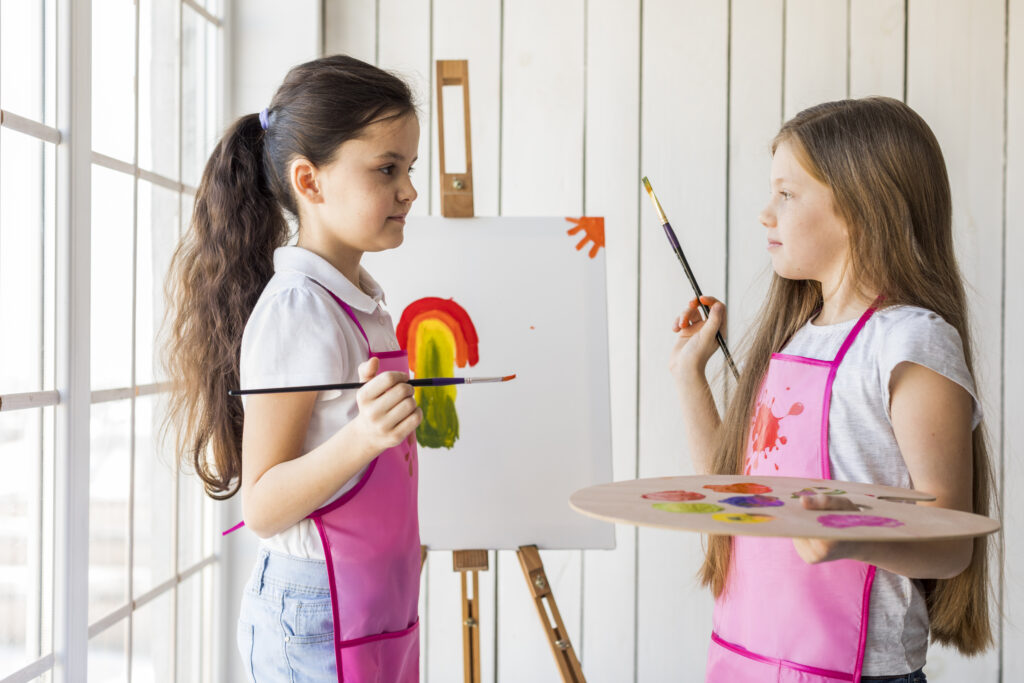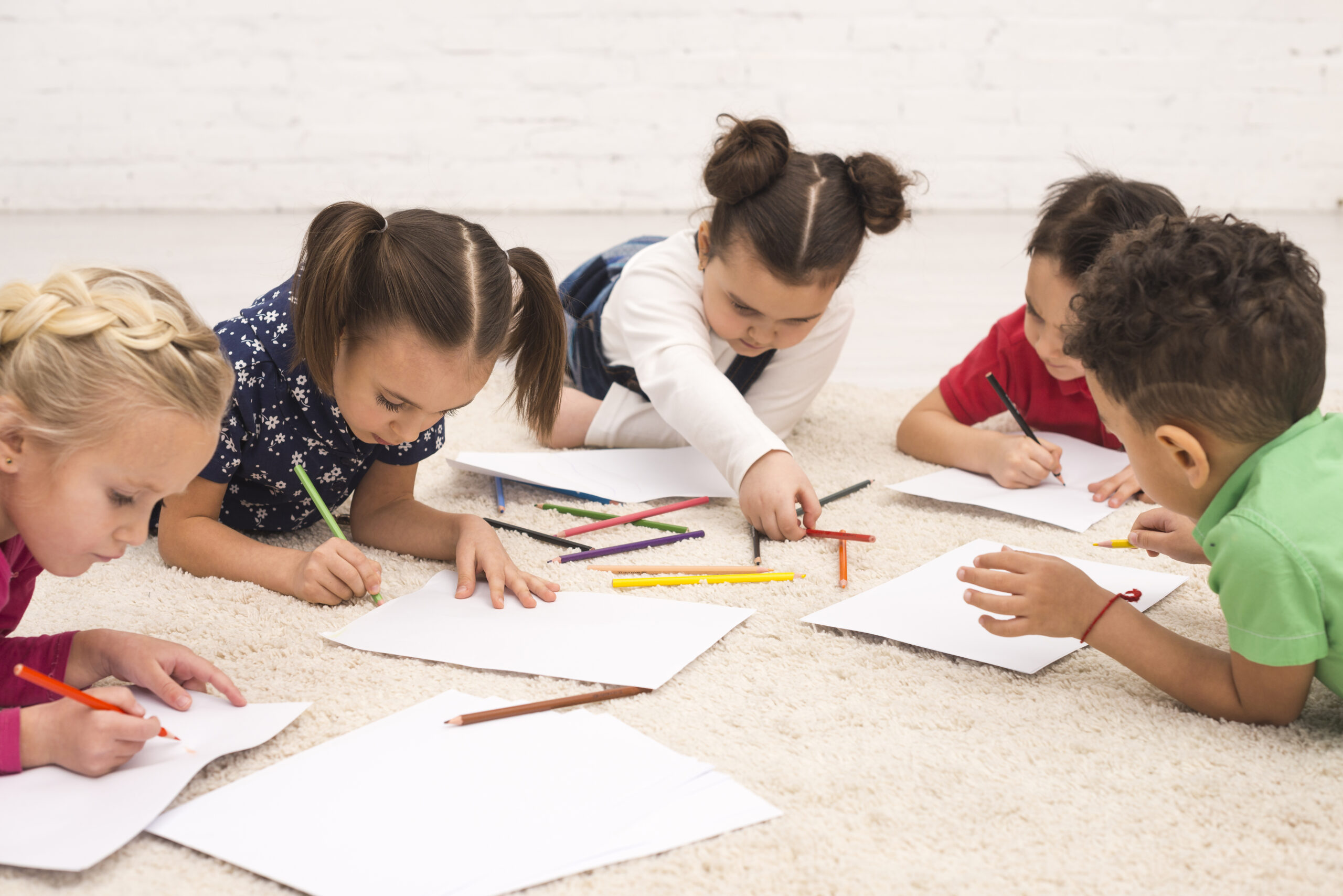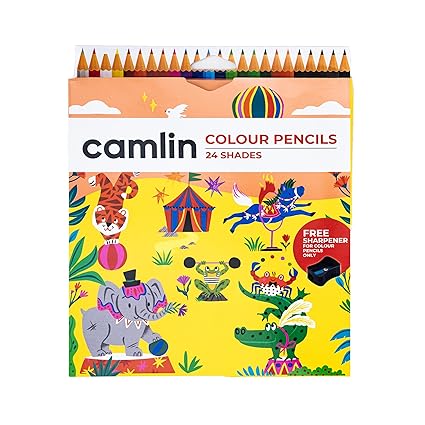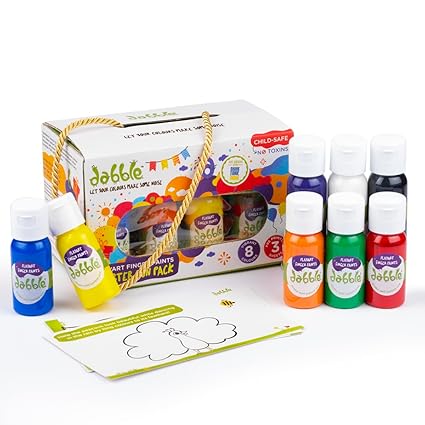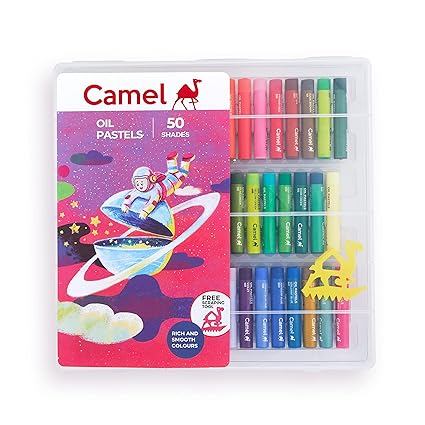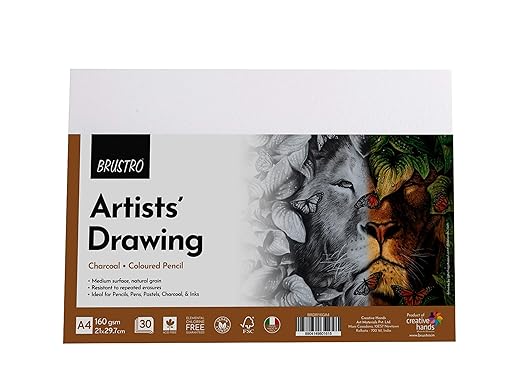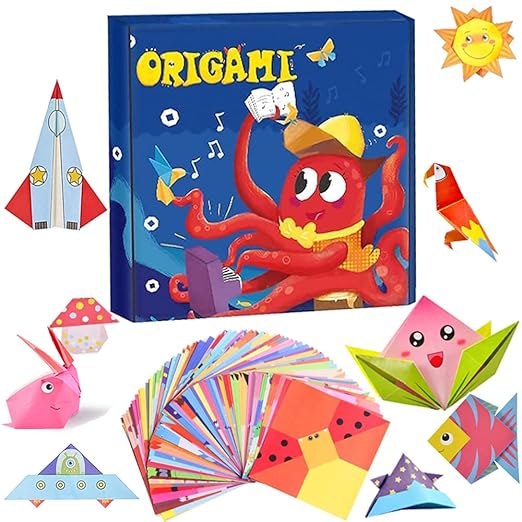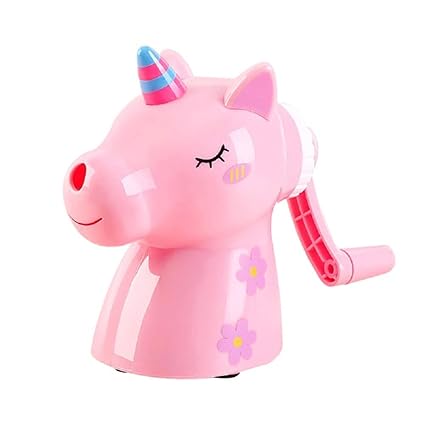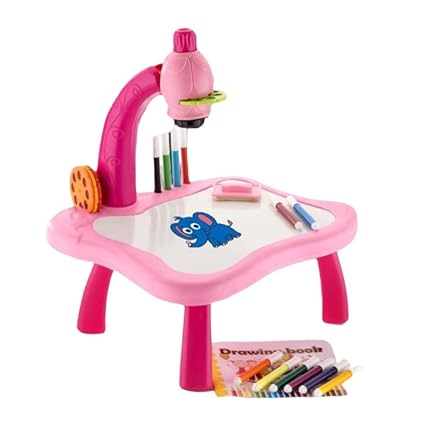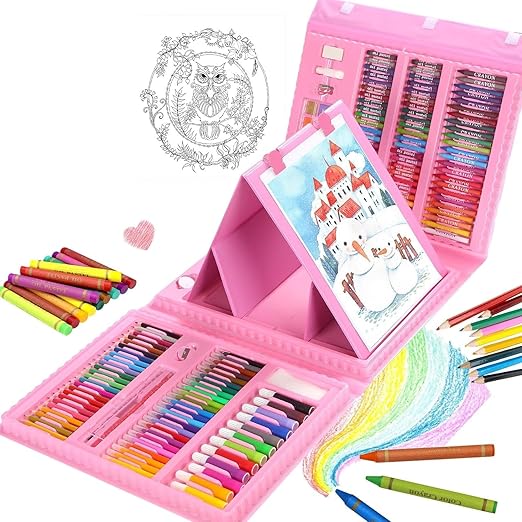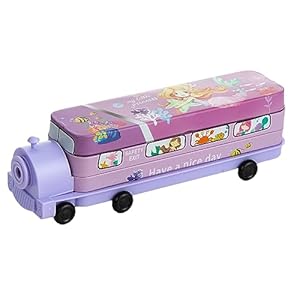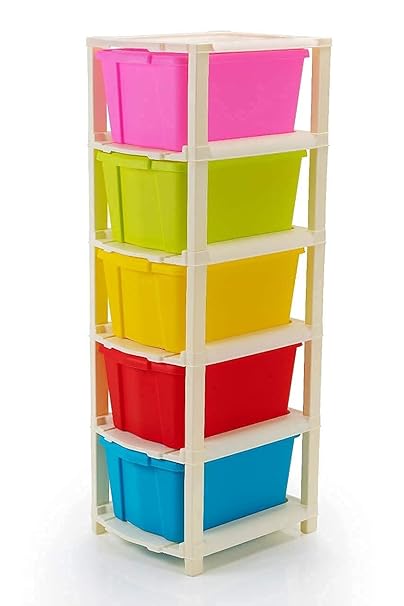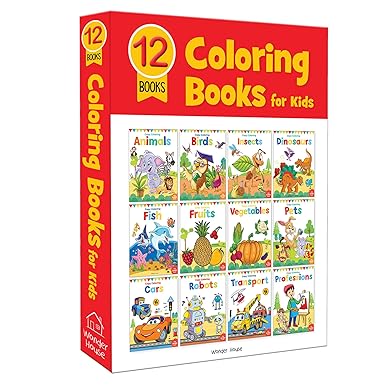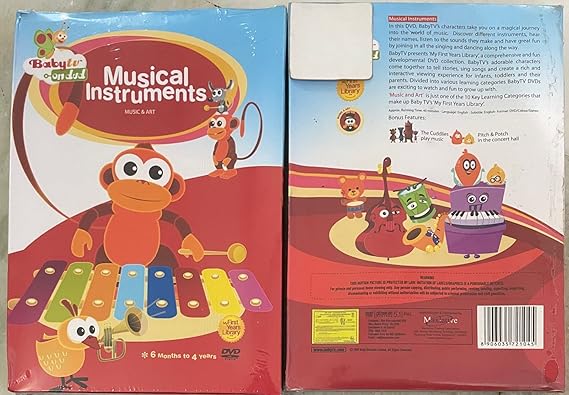In a world dominated by screens and gadgets, nurturing creativity through drawing for kids is more important than ever. Not only does it provide endless entertainment, but it also serves as a valuable tool for self-expression and cognitive development. In this blog, we’ll explore the magical world of drawing for kids and discover why it’s a timeless activity that every child should embrace.
Table of Contents
The Importance of Drawing for Kids:
Drawing is more than just putting pencil to paper; it’s a way for children to express themselves, explore their emotions, and make sense of the world around them.
Research shows that engaging in art activities like drawing can enhance children’s cognitive development, improve their fine motor skills, and boost their self-esteem. Let’s delve into why drawing is more than just a pastime for kids—it’s a fundamental building block for their growth and self-expression.
1. Enhancing Fine Motor Skills: Holding a pencil, crayon, or marker requires children to develop precise hand-eye coordination and fine motor skills.
As they manipulate these tools to create shapes, lines, and images, their motor control improves, laying the groundwork for future activities like writing and crafting.
2. Stimulating Creativity and Imagination: Drawing provides an open canvas for children to unleash their creativity and explore their imagination.
Whether they’re doodling simple shapes or crafting intricate scenes, drawing allows them to express their ideas, dreams, and fantasies in a tangible form.
3. Encouraging Problem-Solving and Spatial Awareness: Through drawing, children learn to analyze and break down complex shapes and structures into simpler components.
This process fosters problem-solving skills and spatial awareness as they figure out how different elements fit together to create a cohesive whole.
4. Cultivating Emotional Expression and Communication: Drawing serves as a powerful tool for children to express their emotions, thoughts, and experiences.
When words fail, art becomes a language through which they can communicate their joys, fears, and worries, fostering emotional intelligence and resilience.
5. Boosting Confidence and Self-Esteem: Watching their creations take shape on paper instills a sense of pride and accomplishment in children.
As they receive praise and recognition for their artistic efforts, their confidence grows, empowering them to tackle new challenges with courage and determination.
6. Fostering Social Skills and Collaboration: Drawing can be a collaborative activity that promotes teamwork, communication, and cooperation among children.
Whether they’re sharing ideas, taking turns, or working on a group project, drawing fosters valuable social skills that are essential for building relationships and navigating the world.
Conclusion:
Drawing is more than just a creative outlet for kids—it’s a cornerstone of their development and self-expression. By encouraging children to pick up a pencil and let their imagination run wild, parents, educators, and caregivers are nurturing essential skills that will serve them well throughout their lives. So, let’s celebrate the power of drawing to inspire, educate, and enrich the lives of children everywhere.
"Drawing for Kids: Opening Inventiveness with 7 Moving Tips"
Introducing children to the sphere of drawing is akin to unlocking a treasure trove of creativity and imagination. It’s a journey filled with wonder and discovery, where each stroke of a crayon or pencil unveils a new realm of possibilities. “Drawing for Kids: Opening Inventiveness with 7 Moving Tips” serves as a guiding light on this artistic voyage, offering invaluable insights and strategies to inspire young minds and nurture their budding talent.
In this blog, we embark on an exploration of seven dynamic tips designed to ignite the imaginations of young artists and propel their drawing skills to new heights. From fostering a supportive environment to introducing innovative techniques, each tip is crafted to empower children with the tools they need to express themselves freely and confidently through art. So, join us as we delve into the world of drawing for kids and unlock the boundless potential of their creativity.
1. Make Drawing Fun: Turn drawing into a fun and exciting activity by incorporating games, challenges, and rewards. Organize drawing competitions, scavenger hunts for artistic inspiration, or themed drawing sessions to keep kids engaged and motivated.
2. Provide the Right Tools: Ensure that children have access to a variety of drawing materials, including pencils, crayons, markers, and colored pencils.
Let them experiment with different mediums and tools to discover their preferences and unleash their creativity.
3. Create a Dedicated Drawing Space: Set up a cozy and inviting drawing area where kids can feel comfortable and inspired to create.
Decorate the space with their artwork, inspiring quotes, and colorful posters to spark their imagination.
4. Offer Inspiration: Introduce children to the world of art through books, museums, and online resources featuring famous artists and their masterpieces.
Encourage them to draw from observation by exploring nature, visiting art galleries, or capturing everyday scenes in their sketchbooks.
5. Encourage Experimentation: Encourage kids to step out of their comfort zones and experiment with different drawing styles, techniques, and subjects.
Provide prompts or challenges to inspire them to think creatively and push the boundaries of their artistic abilities.
6. Celebrate Their Creations: Celebrate children’s artwork by displaying it proudly around the house, framing their favorite pieces, or creating a dedicated gallery wall.
Praise their efforts and creativity, focusing on the process rather than the outcome, to build their confidence and self-esteem.
7. Lead by Example: Be a role model for children by demonstrating your own love for drawing and creativity.
Join them in drawing activities, share your own artwork and experiences, and create opportunities for collaborative art projects.
Conclusion:
By following these seven tips, parents, educators, and caregivers can inspire and empower children to embrace the joy of drawing. Whether it’s through providing the right tools, offering inspiration, or celebrating their artistic endeavors, nurturing a love for drawing in kids can ignite their imagination, boost their confidence, and pave the way for a long period of imagination and self-articulation. So, let’s encourage kids to pick up their pencils, unleash their talents, and embark on an artistic journey filled with color, imagination, and endless possibilities.
"Unleashing Creativity: Exploring the World of Drawing for Kids"
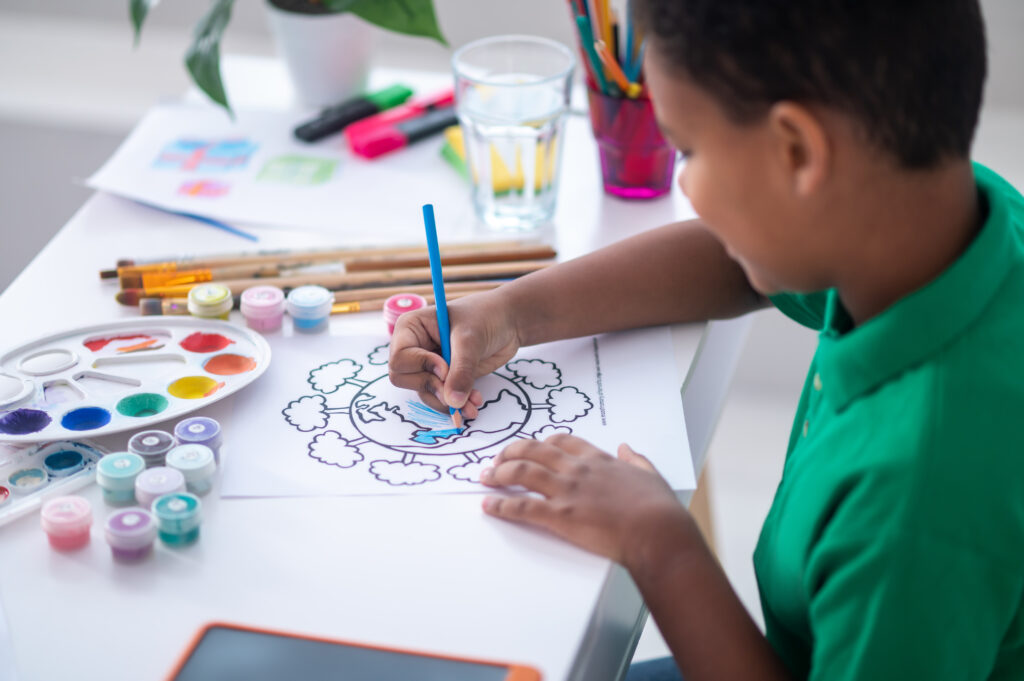
Welcome to the colorful universe of “Unleashing Creativity: Exploring the Planet of Drawing for Kids.” In this enchanting journey, we’ll dive into the boundless possibilities of drawing and how it serves as a gateway for children to express their imagination, emotions, and curiosity. Drawing for kids isn’t just about putting pencil to paper; it’s about embarking on an adventure where every stroke tells a story and every sketch unlocks a new realm of creativity. So, let’s embark on this captivating journey together and discover the magic of drawing for kids.
1. Cultivating Patience and Perseverance: Drawing requires patience and perseverance as children work through challenges and refine their skills over time.
Encourage them to embrace mistakes as part of the learning process and to keep practicing even when things don’t go as planned.
2. Connecting with Nature and the Environment: Drawing provides a unique opportunity for children to observe and appreciate the beauty of the natural world.
Encourage them to take their sketchbooks outdoors and capture scenes from nature, from blooming flowers to majestic landscapes.
3. Stimulating Curiosity and Exploration: Drawing sparks curiosity as children observe the world around them with a keen eye for detail.
Encourage them to explore new subjects and experiment with different drawing styles to expand their artistic horizons.
4. Documenting Memories and Experiences: Drawing serves as a visual diary, allowing children to document their experiences, memories, and adventures.
Encourage them to create illustrated journals or sketchbooks to capture special moments and reflect on their experiences.
5. Promoting Cultural Awareness and Diversity: Drawing can be a window into different cultures, traditions, and perspectives from around the world.
Encourage children to explore diverse artistic styles and themes, exposing them to a rich tapestry of cultural heritage.
6. Encouraging Multimodal Learning: Drawing engages multiple senses and modalities, reinforcing learning through visual, tactile, and kinesthetic experiences.
Encourage children to incorporate drawing into other learning activities, such as storytelling, science experiments, or historical reenactments.
7. Providing a Safe Outlet for Self-Expression: Drawing offers a safe and non-verbal outlet for children to express their thoughts, fears, and dreams.
Encourage them to use drawing as a tool for processing emotions and communicating with others in a supportive environment.
8. Inspiring Lifelong Creativity and Learning: Drawing lays the foundation for a lifelong love of art and creativity, nurturing a sense of curiosity and exploration that extends into adulthood.
Encourage children to continue exploring their artistic passions and never stop learning and growing as artists.
Conclusion:
Drawing for kids is a multifaceted activity that goes beyond simple doodles on paper. It cultivates patience, curiosity, and self-expression while fostering connections with the world around them. By embracing the power of drawing and providing opportunities for exploration and discovery, parents and educators can empower children to unleash their creativity and embark on a lifelong journey of artistic discovery and self-expression.
When setting up for drawing activities for kids, it’s essential to have a variety of products that cater to their creativity and developmental needs. Here’s a list of essential products required for drawing for kids:
"Sketching Adventures: Essential Drawing Tools for Creative Kids"
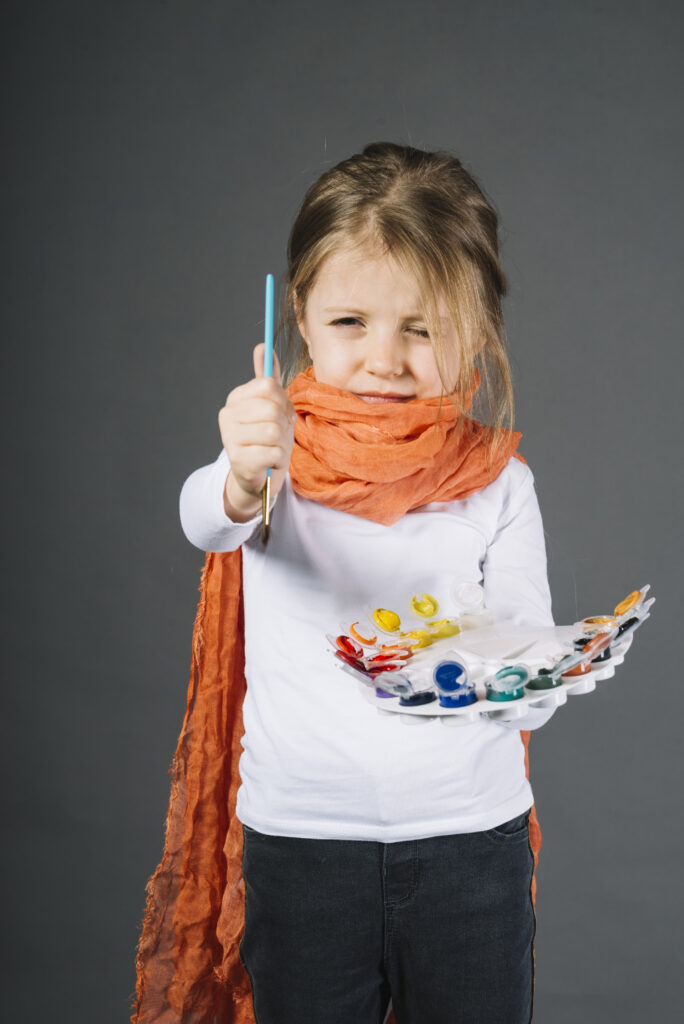
1. Regular pencils: are an essential tool for sketching and outlining in drawing activities for kids. These versatile instruments come in varying degrees of hardness, ranging from soft (e.g., B) to hard (e.g., H), allowing children to achieve different effects in their drawings.
With regular pencils, children can experiment with different line weights, shading techniques, and detailing. They can use them to sketch preliminary outlines of their drawings, adding depth and dimension to their artwork. Additionally, pencils offer the flexibility to erase mistakes and make corrections, empowering children to refine their creations until they’re satisfied with the result.
2. Crayons: are a beloved staple of drawing for younger children, offering a world of vibrant colors and endless creative possibilities. These non-toxic drawing tools are specifically designed to be safe for young artists, allowing them to explore their creativity with peace of mind.
With a variety of colors at their fingertips, children can unleash their imagination and bring their ideas to life in bold and bright hues. Crayons offer a smooth and easy-to-use medium for young hands, making them perfect for coloring, doodling, and creating imaginative masterpieces.
Crayons also provide children with a tactile sensory experience as they glide across the paper, leaving behind a trail of vibrant color. This hands-on approach to drawing encourages fine motor skills, hand-eye coordination, and artistic expression in young children.
Whether they’re coloring in a coloring book, creating their own drawings, or experimenting with color mixing, crayons inspire young artists to express themselves freely and creatively. With crayons in hand, children can embark on colorful adventures and discover the joy of drawing at their own pace.
3. Washable markers: in vibrant colors are a versatile tool that adds a dynamic element to children’s drawing activities. Designed with ease of use and cleanup in mind, these markers allow young artists to explore their creativity without worrying about making a mess.
The bold lines and rich colors of washable markers make them ideal for coloring, outlining, and adding details to artwork. Their smooth application and quick-drying ink enable children to work with precision and confidence, whether they’re filling in large areas or adding fine details to their drawings.
One of the key benefits of washable markers is their ability to be easily cleaned from surfaces and clothing with water or mild soap. This makes them perfect for young children who may accidentally get marker on themselves or their surroundings during art projects. Parents and educators can rest assured knowing that cleanup is a breeze, allowing children to focus on their creative process without worry.
Washable markers also offer children the opportunity to experiment with blending colors, layering shades, and creating unique effects in their artwork. Whether they’re creating vibrant illustrations, designing colorful posters, or decorating homemade cards, washable markers empower young artists to explore their imagination and express themselves freely through drawing.n pace.
4. Colored pencils: are a versatile and essential tool in any young artist’s drawing kit. These pre-sharpened pencils offer children the ability to add intricate details, vibrant colors, and subtle shading to their artwork with precision and control.
With colored pencils, children can explore a wide range of hues, tones, and textures, allowing them to bring their imaginations to life in vivid detail. Whether they’re creating realistic portraits, fantastical landscapes, or abstract designs, colored pencils provide endless possibilities for artistic expression.
One of the key advantages of colored pencils is their ability to layer and blend colors, enabling children to achieve rich, nuanced effects in their drawings. By applying multiple layers of color and varying pressure, they can create depth, dimension, and subtle transitions between shades, adding realism and visual interest to their artwork.
Colored pencils are also ideal for adding fine details and intricate patterns to drawings, thanks to their narrow tips and precise application. Whether they’re outlining shapes, adding texture to surfaces, or adding highlights and shadows, children can exercise their fine motor skills and attention to detail while creating beautifully rendered illustrations.
Additionally, colored pencils are easy to control and manipulate, making them suitable for artists of all skill levels, from beginners to experienced drawers. With a set of pre-sharpened colored pencils in hand, children can embark on artistic adventures, exploring their creativity and honing their drawing skills with each stroke of color.
5. Child-friendly watercolor paints: offer young artists a vibrant and versatile medium for exploring their creativity and expressing themselves through painting. These watercolor sets, specifically designed with children in mind, provide a safe and easy-to-use option for introducing kids to the world of watercolor painting.
One of the key features of child-friendly watercolor paints is their washability. These paints are formulated to be easily cleaned from skin, clothing, and surfaces with water, making them ideal for young children who may be prone to accidental spills and messes during art activities. Parents and educators can feel confident allowing children to experiment and explore with watercolors without worrying about permanent stains or damage.
Child-friendly watercolor sets typically come with a variety of vibrant colors, allowing children to create bold and colorful paintings. The included brushes are designed to be easy to handle and control, enabling children to apply paint with precision and experiment with different brush strokes and techniques.
Watercolor painting offers children the opportunity to explore color mixing, blending, and layering, as well as the effects of water on paint pigments. By experimenting with different amounts of water and paint, children can create a range of textures, gradients, and visual effects in their artwork.
Watercolor painting also encourages creativity, imagination, and self-expression. Whether they’re painting landscapes, portraits, or abstract designs, children can use watercolors to bring their ideas and visions to life on paper, fostering a sense of pride and accomplishment in their artistic achievements.
6. Oil pastels: are a versatile and vibrant medium that offer young artists the opportunity to create richly textured and colorful artwork. These smooth and creamy drawing tools provide children with a unique tactile experience as they glide across the paper, leaving behind bold strokes of pigment.
One of the key characteristics of oil pastels is their ability to blend and layer colors seamlessly. Children can experiment with blending different hues together to create new shades and gradients, as well as layering colors to add depth and dimension to their drawings. This flexibility allows for endless creative possibilities, from creating soft, subtle transitions to bold, dynamic contrasts.
Oil pastels are also well-suited for creating a variety of textures and effects in artwork. Children can experiment with different techniques, such as stippling, sgraffito, and impasto, to add interest and detail to their drawings. The creamy consistency of oil pastels allows for smooth application and easy blending, making them an ideal medium for artists of all skill levels.
Another advantage of oil pastels is their versatility on different surfaces. They can be used on a variety of papers, including drawing paper, watercolor paper, and even textured surfaces like canvas or cardboard. This versatility allows children to explore different textures and effects in their artwork, expanding their creative horizons and fostering experimentation.
Oil pastels offer children a fun and engaging medium for self-expression and artistic exploration. Whether they’re creating vibrant landscapes, expressive portraits, or abstract designs, oil pastels provide young artists with a dynamic and rewarding drawing experience that encourages creativity, experimentation, and imagination.ments.
"Choosing the Perfect Drawing Paper and Sketchbooks for Kids"
1. Drawing paper: is a fundamental component of any young artist’s toolkit, providing a versatile and reliable surface for a wide range of drawing techniques. This medium-weight paper is specifically designed to accommodate the demands of various drawing styles and materials, making it an essential foundation for children’s artistic endeavors.
One of the key qualities of drawing paper is its durability and resilience. It offers enough weight to support various drawing mediums, including pencils, crayons, markers, colored pencils, and pastels, without buckling or tearing under pressure. This ensures that children can confidently experiment with different materials and techniques without worrying about their paper falling apart.
Drawing paper also offers a smooth and consistent texture that allows for precise lines, smooth blending, and even coverage of colors. Whether children are sketching outlines, shading gradients, or adding intricate details to their drawings, the surface of drawing paper provides a reliable foundation for their artistic expressions.
Another advantage of drawing paper is its versatility. It can be used for a wide range of drawing techniques, including sketching, doodling, coloring, and more elaborate artistic projects. Its adaptability makes it suitable for artists of all ages and skill levels, from beginners to experienced drawers, allowing children to explore their creativity and develop their skills at their own pace.
Additionally, drawing paper is available in various sizes and formats, from standard letter-size sheets to larger sketch pads and drawing pads. This variety allows children to choose the appropriate size and format for their projects, whether they’re working on a small sketch or a large-scale masterpiece.
Overall, drawing paper serves as a reliable and versatile surface for children to unleash their creativity, experiment with different materials and techniques, and express themselves through drawing. With its durable construction, smooth texture, and adaptability, drawing paper provides young artists with a solid foundation for their artistic journey.
2. Sketchbooks: are indispensable tools for young artists, offering them a portable and convenient way to create artwork on-the-go. These blank books with durable covers provide a dedicated space for children to sketch, doodle, and explore their creativity wherever inspiration strikes.
One of the key benefits of sketchbooks is their portability. Their compact size and lightweight design make them easy to carry in a backpack, purse, or tote bag, allowing children to take their artistic pursuits with them wherever they go. Whether they’re traveling, waiting for appointments, or simply spending time outdoors, sketchbooks provide a portable canvas for capturing ideas and observations on-the-fly.
Sketchbooks also offer children a sense of ownership and independence over their artistic endeavors. With their own personal sketchbook, children can express themselves freely and experiment with different techniques and styles without fear of judgment or criticism. The blank pages of a sketchbook serve as a blank canvas for their imagination to run wild, encouraging them to explore new ideas and push the boundaries of their creativity.
Additionally, sketchbooks typically feature durable covers that protect the pages inside from damage and wear. Whether they’re tossed in a backpack, stuffed in a drawer, or carried around town, sketchbooks are designed to withstand the rigors of everyday use, ensuring that children’s artwork remains safe and secure.
Sketchbooks come in a variety of sizes, formats, and styles to suit different preferences and artistic needs. Some feature spiral bindings for easy flipping and flat-lay pages, while others have hardbound covers for added durability and protection. Children can choose the sketchbook that best fits their preferences and artistic aspirations, whether they prefer a compact pocket-sized book or a larger format for more expansive drawings.
Overall, sketchbooks provide young artists with a portable and personal space to explore their creativity, experiment with different materials and techniques, and document their artistic journey wherever they go. With their own sketchbook in hand, children can embark on artistic adventures and capture their ideas and inspirations on-the-go, fostering a lifelong love of drawing and creativity.artistic journey.
3. Construction paper: is a versatile and colorful medium that offers young artists endless possibilities for creative expression. With its sturdy construction and vibrant hues, it’s the perfect choice for collage and mixed-media projects, allowing children to explore their imagination and create dynamic artworks.
One of the vital elements of development paper is its toughness. Made from heavyweight paper stock, construction paper can withstand cutting, folding, and gluing without tearing or crumbling. This makes it ideal for collage projects, where children can experiment with layering and overlapping different shapes and textures to create visually striking compositions.
Another advantage of construction paper is its wide range of colors and shades. Available in assorted packs or individual sheets, construction paper offers a rainbow of hues that inspire creativity and encourage experimentation. Children can mix and match colors to create bold contrasts or subtle gradients, adding depth and visual interest to their artwork.
Construction paper is also highly versatile, making it suitable for a variety of artistic techniques and applications. In addition to collage, children can use construction paper for drawing, painting, printmaking, and more. Its smooth surface provides a stable foundation for various mediums, allowing children to explore different techniques and create multimedia masterpieces.
Additionally, construction paper is an affordable and accessible art supply that can be found at most craft stores, office supply stores, and online retailers. Its affordability makes it a practical choice for classrooms, afterschool programs, and home art projects, allowing children to unleash their creativity without breaking the bank.
Overall, construction paper is a valuable tool for young artists, providing them with a versatile and durable medium for exploring their creativity and expressing themselves through collage and mixed-media projects. With its vibrant colors, sturdy construction, and endless possibilities, construction paper inspires children to think outside the box and create imaginative artworks that reflect their unique personalities and perspectivesjourney.
4. Watercolor paper: is a specialized type of paper specifically designed to handle the unique properties of watercolor paint. It is thicker and more textured than regular drawing paper, providing a stable and absorbent surface that can withstand the wetness and manipulation of watercolor painting techniques.
One of the key features of watercolor paper is its thickness and weight. It is typically available in various weights, measured in pounds or grams per square meter (GSM). Heavier weights, such as 140 lb (300 GSM) or higher, are preferred for watercolor painting as they are more durable and less prone to warping or buckling when wet.
The texture of watercolor paper is also an important characteristic that affects the appearance of the finished artwork. Watercolor paper comes in three principal surfaces: hot-squeezed, cold-squeezed, and rough. Hot-pressed paper has a smooth surface that is ideal for detailed work and fine brushstrokes. Cold-pressed paper has a slightly textured surface that adds depth and character to paintings, while rough paper has a heavily textured surface that creates interesting and expressive effects.
Another important quality of watercolor paper is its absorbency. Watercolor paper is designed to absorb water and pigment evenly, allowing artists to achieve vibrant colors and smooth washes. This absorbency prevents the paint from pooling or bleeding on the surface of the paper, ensuring crisp and clean lines in the finished artwork.
Watercolor paper is available in various sizes and formats, including individual sheets, pads, blocks, and sketchbooks. Artists can choose the size and format that best suits their artistic preferences and needs, whether they prefer working on small studies or large-scale paintings.
Overall, watercolor paper is an essential tool for watercolor artists, providing them with a reliable and versatile surface for creating beautiful and expressive paintings. With its thickness, texture, and absorbency, watercolor paper enhances the performance of watercolor paints and allows artists to explore a wide range of techniques and effects in their artwork.
"Artistic Arsenal: Essential Accessories for Young Picassos"
1. Erasers: are indispensable tools for young artists, providing them with the ability to correct mistakes and refine their drawings with precision. Soft, non-abrasive erasers are specifically designed to remove graphite, charcoal, and other drawing materials from paper without damaging the surface, making them ideal for delicate artwork.
One of the key features of soft erasers is their gentle and forgiving nature. Unlike abrasive erasers, which can leave smudges or damage the paper, soft erasers lift pencil marks cleanly and smoothly, leaving behind a pristine surface. This allows children to experiment and explore without fear of making irreversible mistakes, empowering them to take creative risks and push the boundaries of their artistic abilities.
Soft erasers are also highly versatile, making them suitable for a variety of drawing materials and techniques. Whether children are sketching, shading, or blending, soft erasers provide precise control and effortless erasure, allowing them to achieve the desired effect in their drawings. Additionally, soft erasers can be shaped or cut into smaller pieces to create finer points for detailed erasing or highlights.
Another advantage of soft erasers is their ease of use and cleanup. They are typically latex-free and non-toxic, making them safe for children to handle. Soft erasers can be easily cleaned with a gentle wipe or kneaded to remove any debris or buildup, ensuring that they remain effective and long-lasting.
In addition to correcting mistakes, soft erasers can also be used creatively to add highlights, textures, and effects to drawings. By selectively erasing areas of their artwork, children can create highlights, lighten tones, and add depth and dimension to their drawings, enhancing the overall visual impact of their artwork.
Overall, soft erasers are essential tools for young artists, providing them with the ability to correct mistakes, refine their drawings, and unleash their creativity with confidence. With their gentle and forgiving nature, soft erasers empower children to explore their artistic potential and express themselves freely through drawing.
2. Sharpeners: are essential tools for young artists, ensuring that their pencils remain sharp and ready for precise drawing and coloring. Available in handheld or electric models, sharpeners provide a convenient and efficient way to maintain the sharpness of pencils, allowing children to focus on their creative endeavors without interruption.
Handheld sharpeners are portable and easy to use, making them ideal for on-the-go drawing sessions or travel. They typically feature a small, compact design with a single or double-hole opening to accommodate different pencil sizes. Children can simply insert their pencils into the sharpener, rotate the handle, and watch as the blades shave away the wood casing to reveal a sharp point.
Electric sharpeners offer a faster and more automated sharpening experience, making them suitable for classrooms, studios, or home use. With the push of a button, electric sharpeners quickly and efficiently sharpen pencils to a precise point, saving time and effort for young artists. They often feature a built-in reservoir to collect shavings, minimizing mess and cleanup.
One of the key benefits of sharpeners is their ability to produce a sharp and consistent point, allowing children to achieve fine lines, detailed drawings, and smooth coloring. Sharp pencils also reduce the risk of smudging and smearing, ensuring that children’s artwork remains clean and professional-looking.
In addition to keeping pencils sharp, sharpeners also help children develop important fine motor skills and hand-eye coordination. The act of inserting pencils into the sharpener, rotating the handle, and removing the sharpened pencils encourages dexterity and precision, promoting the development of motor skills in young artists.
Overall, sharpeners are indispensable tools for young artists, providing them with a convenient and efficient way to keep their pencils sharp and ready for drawing and coloring. Whether handheld or electric, sharpeners offer a reliable solution for maintaining the sharpness of pencils, empowering children to unleash their creativity with confidence and precision.
3. Rulers: are indispensable tools for young artists, providing them with the ability to draw straight lines and measure distances accurately in their artwork. Transparent rulers with metric and imperial measurements offer a clear and precise way to guide children’s drawing and ensure that their lines are straight and consistent.
One of the key features of transparent rulers is their see-through design, which allows children to easily align the ruler with their paper and see the lines they are drawing underneath. This transparency ensures that children can maintain accuracy and precision in their drawings, even when working on intricate or detailed projects.
Transparent rulers typically feature both metric and imperial measurements, allowing children to choose the unit of measurement that is most familiar and convenient for them. Whether they’re drawing in centimeters or inches, transparent rulers provide a standardized way to measure distances and ensure uniformity in their artwork.
In addition to drawing straight lines, transparent rulers can also be used for other purposes, such as measuring angles, creating geometric shapes, or guiding cutting and trimming. Their versatile design makes them a valuable tool for a wide range of artistic and creative projects, both in the classroom and at home.
Overall, transparent rulers with metric and imperial measurements are essential tools for young artists, providing them with the precision and accuracy they need to create clean, professional-looking drawings. With their see-through design and versatile functionality, transparent rulers empower children to take their drawing skills to the next level and express themselves with confidence and precision.precision.
4. Drawing boards: are essential tools for young artists, providing them with a stable and portable surface to work on their drawings. These boards typically feature clips or clamps to hold paper securely in place, preventing it from moving or shifting while drawing.
One of the key benefits of drawing boards is their portability. They are lightweight and easy to carry, making them ideal for drawing on-the-go or setting up a temporary workspace anywhere. Whether children are drawing at home, in the classroom, or outdoors, drawing boards provide a convenient and versatile solution for their artistic pursuits.
Drawing boards also offer a stable and supportive surface for drawing, ensuring that children can work comfortably and confidently without worrying about their paper slipping or sliding. The clips or clamps hold the paper securely in place, allowing children to focus on their artwork without distractions.
Another advantage of drawing boards is their versatility. They come in various sizes and formats to accommodate different paper sizes and drawing techniques. Some boards feature built-in rulers, guides, or grids to assist with measurements and alignment, while others have adjustable angles for drawing inclined or vertical lines.
In addition to holding paper, drawing boards can also be used for other purposes, such as painting, sketching, drafting, and crafting. Their sturdy construction and durable materials make them suitable for a wide range of artistic and creative projects, providing children with a reliable and functional surface to express themselves.
Overall, drawing boards with clips or clamps are indispensable tools for young artists, offering them a portable, stable, and versatile surface for drawing and other artistic activities. With their convenience, reliability, and functionality, drawing boards empower children to unleash their creativity and explore the world of art with confidence and enthusiasm.
"Creative Chaos Contained: Organizing Kids' Art Supplies with Style"
1. An art supply box: is an essential organizational tool for young artists, providing them with a sturdy and convenient storage solution to keep their drawing supplies organized and easily accessible. These boxes or caddies are designed to hold a variety of drawing materials, including pencils, markers, crayons, erasers, sharpeners, and more, ensuring that children have everything they need at their fingertips for their artistic pursuits.
One of the key benefits of an art supply box is its ability to keep drawing supplies organized and tidy. With compartments, dividers, and pockets, these boxes offer a designated space for each type of drawing material, preventing clutter and confusion. Children can easily find and retrieve the supplies they need without searching through drawers or bins, saving time and frustration.
Art supply boxes are also portable and easy to transport, making them ideal for taking art supplies on-the-go or traveling to different locations. Whether children are drawing at home, in the classroom, or outdoors, they can simply grab their art supply box and have everything they need for their artistic endeavors wherever they go.
Another advantage of art supply boxes is their durability and longevity. Made from sturdy materials like plastic, wood, or metal, these boxes are built to withstand the rigors of everyday use, ensuring that drawing supplies remain safe and secure. Some boxes even feature locking mechanisms or handles for added convenience and security.
In addition to organizing drawing supplies, art supply boxes can also serve as a creative space for children to personalize and decorate. They can add stickers, labels, or paint to customize their boxes and make them uniquely their own. This personalization adds a sense of ownership and pride to their art supplies, inspiring creativity and fostering a sense of responsibility for their materials.
Overall, an art supply box is an indispensable tool for young artists, providing them with a practical and functional storage solution to keep their drawing supplies organized, accessible, and protected. With its convenience, durability, and versatility, an art supply box empowers children to explore their creativity and express themselves through drawing with confidence and enthusiasm.
2. Pencil cases: are essential accessories for young artists, providing them with a convenient and portable way to store and organize their drawing supplies. These individual cases or pouches are designed to hold pencils, crayons, markers, erasers, sharpeners, and other small drawing tools, ensuring that children have everything they need for their artistic endeavors neatly organized in one place.
One of the key benefits of pencil cases is their compact and lightweight design, making them easy to carry and transport. Whether children are drawing at home, in the classroom, or on-the-go, they can simply grab their pencil case and have all their essential drawing supplies at their fingertips. This portability allows children to take their artistic pursuits with them wherever they go, whether it’s to a friend’s house, on a family trip, or to an art class.
Pencil cases also offer a practical and efficient way to keep drawing supplies organized and tidy. With compartments, pockets, and elastic loops, these cases provide designated spaces for each type of drawing tool, preventing clutter and confusion. Children can easily see and access their supplies, saving time and frustration when searching for the right pencil or marker.
Another advantage of pencil cases is their versatility. They come in a variety of sizes, shapes, colors, and designs to suit different preferences and needs. Some cases feature zippered closures for added security, while others have transparent or mesh panels for easy visibility of contents. Children can choose the pencil case that best fits their style and personality, adding a touch of fun and flair to their art supplies.
In addition to organizing drawing supplies, pencil cases can also serve as a creative space for children to personalize and decorate. They can add stickers, patches, or drawings to customize their cases and make them uniquely their own. This personalization adds a sense of ownership and pride to their art supplies, inspiring creativity and fostering a sense of responsibility for their materials.
Overall, pencil cases are indispensable accessories for young artists, providing them with a practical and stylish way to store and organize their drawing supplies. With their portability, organization, versatility, and personalization options, pencil cases empower children to explore their creativity and express themselves through drawing with confidence and enthusiasm.
3. Drawer organizers: are invaluable tools for young artists, offering a convenient and efficient way to keep drawing supplies neat and orderly within larger storage spaces such as desks, shelves, or cabinets. These small trays or containers are designed to fit snugly inside drawers, providing designated compartments for organizing pencils, markers, crayons, erasers, sharpeners, and other drawing tools.
One of the key benefits of drawer organizers is their ability to maximize space and minimize clutter. By dividing drawers into separate compartments, organizers prevent drawing supplies from becoming jumbled together, making it easy for children to find and retrieve the tools they need without digging through a mess of items. This organization not only saves time and frustration but also promotes a sense of orderliness and responsibility in children’s artistic endeavors.
Drawer organizers come in various sizes, shapes, and configurations to accommodate different types and quantities of drawing supplies. Some organizers feature adjustable dividers or removable trays, allowing children to customize the layout to suit their specific needs and preferences. Others have compartments of various sizes to accommodate different-sized items, from small pencils to large markers.
Another advantage of drawer organizers is their versatility. While primarily used for organizing drawing supplies, these organizers can also be used to store and organize other small items, such as office supplies, craft materials, or personal belongings. This versatility makes drawer organizers a practical and multi-functional solution for keeping drawers tidy and clutter-free in various settings, including classrooms, art studios, and homes.
In addition to promoting organization and efficiency, drawer organizers can also help children develop important life skills, such as tidiness, organization, and responsibility. By providing a designated space for each drawing tool, organizers encourage children to take ownership of their materials and maintain order in their artistic pursuits. This sense of responsibility can translate into other areas of their lives, fostering habits of organization and tidiness that can benefit them well into adulthood.
Overall, drawer organizers are indispensable tools for young artists, offering a practical and efficient way to keep drawing supplies organized, accessible, and tidy within larger storage spaces. With their versatility, customization options, and benefits for promoting organization and responsibility, drawer organizers empower children to explore their creativity and express themselves through drawing with confidence and enthusiasm.
"Art Armor: Equipping Young Artists with Protective Gear for Drawing"
1. Aprons or smocks: are essential accessories for young artists, providing them with protection from spills, splatters, and stains while they explore their creativity with paint, markers, and other art supplies. These washable garments are designed to shield children’s clothing from messes, allowing them to fully immerse themselves in their artistic endeavors without worrying about ruining their clothes.
One of the key benefits of aprons or smocks is their ability to keep children’s clothing clean and dry during messy art activities. Whether children are painting with watercolors, coloring with markers, or working with clay, aprons provide a barrier between their clothes and potential spills or splatters, preventing stains and damage.
Aprons or smocks are typically made from durable and easy-to-clean materials, such as cotton or polyester, that can withstand repeated washings. This makes them practical and long-lasting solutions for protecting children’s clothing during art projects, ensuring that they can be used again and again without losing their effectiveness.
In addition to providing protection, aprons or smocks also offer children a sense of independence and ownership over their artistic pursuits. By wearing their own apron, children can take responsibility for protecting their clothes and keeping themselves clean during art activities. This sense of ownership fosters a positive attitude towards creativity and encourages children to fully engage in their artistic endeavors without fear of making a mess.
Aprons or smocks come in a variety of sizes, styles, and designs to suit different preferences and needs. Some feature adjustable straps or ties for a customized fit, while others have pockets for storing art supplies or personal belongings. Children can choose the apron or smock that best fits their style and personality, adding a fun and colorful element to their art sessions.
Overall, aprons or smocks are indispensable accessories for young artists, providing them with protection, independence, and peace of mind during messy art activities. With their practicality, durability, and versatility, aprons or smocks empower children to explore their creativity with confidence and enthusiasm, knowing that their clothes are safe and secure from spills and stains.
2. Drop cloths or plastic table: covers are essential tools for protecting surfaces from spills, stains, and messes during art activities. Whether children are painting, crafting, or working with messy materials like glue and glitter, these covers provide a reliable barrier that shields tables, floors, or other surfaces from damage.
One of the key benefits of drop cloths or plastic table covers is their versatility. They can be used on a variety of surfaces, including tables, countertops, floors, or outdoor spaces, providing protection wherever art activities take place. Whether children are working indoors or outdoors, drop cloths or table covers offer peace of mind for parents and educators, ensuring that surfaces remain clean and undamaged.
Drop cloths or plastic table covers come in disposable or washable options to suit different preferences and needs. Disposable covers are convenient and easy to use, allowing for quick cleanup after art activities. They can be simply discarded after use, eliminating the need for washing and saving time and effort. Washable covers, on the other hand, can be reused multiple times, making them a more eco-friendly and cost-effective option in the long run.
In addition to providing protection from spills and stains, drop cloths or plastic table covers also offer a smooth and durable surface for children to work on. They provide a stable foundation for drawing, painting, crafting, and other art activities, ensuring that children can focus on their creativity without worrying about damaging the underlying surface.
Drop cloths or plastic table covers come in various sizes, shapes, and colors to accommodate different surfaces and preferences. Some covers feature printed designs or patterns to add a decorative touch to art activities, while others are transparent or solid-colored for a more practical and versatile option.
Overall, drop cloths or plastic table covers are indispensable accessories for young artists, providing them with protection, convenience, and peace of mind during messy art activities. With their versatility, durability, and ease of use, drop cloths or table covers empower children to explore their creativity with confidence and enthusiasm, knowing that their workspace is safe and protected from spills and stains.
"Sketching Stars: Sparking Inspiration and Learning in Kids' Drawing"
1. Drawing books: are valuable resources for young artists, offering step-by-step tutorials, creative prompts, and inspiration to ignite their imaginations and develop their drawing skills. These books provide children with structured guidance and encouragement as they explore different drawing techniques, styles, and subjects.
One of the key benefits of drawing books is their accessibility. They are widely available in bookstores, libraries, and online platforms, making them easily accessible to children of all ages and skill levels. Whether children are beginners looking to learn the basics of drawing or experienced artists seeking new challenges and inspiration, drawing books offer something for everyone.
Drawing books typically feature a variety of tutorials and exercises that cover a wide range of topics, from basic shapes and lines to more advanced concepts like perspective, shading, and composition. Step-by-step instructions guide children through each drawing, breaking down complex subjects into manageable steps and providing tips and techniques along the way.
In addition to tutorials, drawing books often include creative prompts and ideas to spark children’s imagination and encourage them to explore their creativity. Prompts may suggest drawing specific subjects or scenes, experimenting with different styles or mediums, or incorporating elements of storytelling into their artwork. These prompts inspire children to think creatively and develop their own unique artistic voice.
Drawing books also provide a source of inspiration and motivation for children as they embark on their artistic journey. Through the work of professional artists and illustrators showcased in the books, children can discover a variety of styles, techniques, and approaches to drawing. Seeing examples of finished artwork and learning about the creative process behind them can inspire children to push their own boundaries and strive for excellence in their own drawings.
Overall, drawing books are invaluable resources for young artists, providing them with the tools, guidance, and inspiration they need to develop their drawing skills and express themselves creatively. With their accessible format, structured tutorials, creative prompts, and inspiring examples, drawing books empower children to explore the world of art with confidence, enthusiasm, and endless possibilities.
2. Art DVDs or online tutorials: are invaluable resources for young artists, offering educational videos and tutorials that cover a wide range of drawing techniques and explore various art styles. These multimedia resources provide children with dynamic and interactive learning experiences that cater to different learning preferences and skill levels.
One of the key benefits of art DVDs or online tutorials is their accessibility and convenience. Children can access these resources from the comfort of their own homes, allowing them to learn and practice drawing at their own pace and on their own schedule. Whether they’re beginners seeking to learn the basics of drawing or more advanced artists looking to refine their skills, art DVDs or online tutorials offer something for everyone.
Art DVDs or online tutorials typically feature professional artists and instructors who guide children through various drawing techniques, exercises, and projects. These instructors provide clear and concise instructions, demonstrating each technique step-by-step and offering tips and advice along the way. Children can follow along with the tutorials, pausing, rewinding, and replaying as needed to master each skill.
In addition to tutorials, art DVDs or online tutorials often include demonstrations and examples of finished artwork to inspire and motivate children. Through watching artists at work and learning about their creative process, children gain insights into different art styles, mediums, and approaches to drawing. This exposure to diverse artistic perspectives encourages children to experiment, explore, and develop their own unique artistic voice.
Art DVDs or online tutorials also provide a sense of community and connection for young artists. Many online platforms offer forums, chat rooms, or social media groups where children can connect with fellow artists, share their artwork, and receive feedback and encouragement from peers and instructors. This sense of belonging fosters a supportive and collaborative learning environment, where children can learn from each other’s experiences and grow together as artists.
Overall, art DVDs or online tutorials are invaluable resources for young artists, providing them with accessible, interactive, and inspiring learning experiences that cater to their individual needs and interests. With their engaging format, expert instruction, and sense of community, art DVDs or online tutorials empower children to explore the world of art with confidence, enthusiasm, and endless possibilities.
"Safe Strokes: Equipping Young Artists with Drawing Safety Essentials"
1. Non-toxic art supplies: are essential for ensuring the safety and well-being of young artists as they explore their creativity. These materials are specifically formulated to be free from harmful chemicals and substances, making them safe for children to handle and use in their artwork.
One of the key benefits of non-toxic art supplies is their peace of mind for parents, teachers, and caregivers. By choosing art materials labeled as non-toxic, adults can feel confident that children are not being exposed to harmful substances or chemicals that could potentially pose health risks. This reassurance allows children to fully immerse themselves in their artistic pursuits without worry or hesitation.
Non-toxic art supplies are formulated with the safety of children in mind, using materials that are tested and certified to meet strict safety standards. These supplies are free from hazardous substances such as lead, phthalates, asbestos, and other toxic chemicals that may be found in some art materials. Instead, they use safer alternatives and natural ingredients that are gentle on children’s skin and respiratory systems.
In addition to being safe for children, non-toxic art supplies are also environmentally friendly. Many manufacturers use sustainable practices and eco-friendly materials in the production of their art supplies, minimizing their impact on the environment and reducing the use of harmful chemicals and pollutants. This commitment to sustainability ensures that children can enjoy their artistic pursuits without harming the planet for future generations.
Non-toxic art supplies come in a variety of forms, including paints, markers, crayons, pencils, glues, and modeling clays. These supplies are available from reputable brands and manufacturers who prioritize safety and quality in their products. Parents and caregivers should always check the labels of art supplies to ensure that they are labeled as non-toxic and safe for children to use.
Overall, non-toxic art supplies are essential for creating a safe and healthy environment for young artists to explore their creativity. By choosing art materials labeled as non-toxic, adults can provide children with the opportunity to express themselves through art without compromising their health or safety. With non-toxic art supplies, children can unleash their imagination and creativity with confidence, knowing that they are using materials that are safe, healthy, and environmentally friendly.
2. Good ventilation: is essential in the drawing area, particularly when using paints, markers, or other odorous materials. Proper ventilation helps to remove airborne particles, fumes, and odors from the air, creating a healthier and more comfortable environment for young artists to work in.
One of the key benefits of good ventilation is the removal of potentially harmful substances from the air. Many art materials, such as paints, markers, and solvents, contain volatile organic compounds (VOCs) and other chemicals that can release fumes and odors into the air during use. Breathing in these fumes over time can lead to respiratory irritation, headaches, and other health problems, especially for children who may be more sensitive to airborne pollutants.
By ensuring good ventilation in the drawing area, adults can help to minimize children’s exposure to these harmful substances and create a safer and healthier environment for artistic activities. Opening windows and doors, using fans or air purifiers, and maintaining a steady flow of fresh air can all help to improve ventilation and reduce indoor air pollution.
In addition to removing harmful substances from the air, good ventilation also helps to regulate temperature and humidity levels in the drawing area. Proper airflow helps to prevent overheating and discomfort, especially during hot or humid weather, allowing children to focus on their artwork without distractions.
Parents, teachers, and caregivers should also be mindful of ventilation when selecting art materials for children to use. Choosing low-odor or water-based paints and markers can help to minimize indoor air pollution and reduce the need for heavy ventilation. Additionally, using art materials labeled as non-toxic and environmentally friendly can further enhance the safety and healthfulness of the drawing area.
Overall, good ventilation is essential for creating a safe, healthy, and comfortable environment for young artists to explore their creativity. By ensuring proper airflow and ventilation in the drawing area, adults can help to minimize children’s exposure to harmful substances and create an enjoyable and rewarding artistic experience for children of all ages.
(FAQs) about drawing for kids
1. Why is drawing important for kids?
Drawing is important for kids as it helps in developing their fine motor skills, hand-eye coordination, and creativity. It also encourages self-expression and boosts confidence.
2. At what age should kids start drawing?
Kids can start drawing as soon as they are able to hold a crayon or pencil, usually around the age of 2 or 3. However, interest in drawing can vary, and some children may show an interest in art at an earlier or later age.
3. How can I encourage my child to draw?
You can encourage your child to draw by providing them with a variety of art materials, such as crayons, markers, and colored pencils. Encourage them to explore different subjects and styles, and praise their efforts to boost their confidence.
4. What are some easy drawing activities for kids?
Some easy drawing activities for kids include drawing simple shapes, tracing objects, doodling, and drawing from observation. You can also provide drawing prompts or use drawing books with step-by-step tutorials.
Some More FAQs:
5. How can I help my child improve their drawing skills?
You can help your child improve their drawing skills by providing them with regular opportunities to practice drawing, offering constructive feedback, and introducing them to new techniques and mediums. Enrolling them in art classes or workshops can also help them develop their skills further
6. Are there any benefits of drawing for kids beyond artistic development?
Yes, drawing offers several benefits for kids beyond artistic development. It can help improve concentration, problem-solving skills, and visual literacy. It also provides a means of self-expression and can be therapeutic for children who may find it difficult to express themselves verbally.
7. How do I know if my child is interested in pursuing art as a hobby or career?
If your child shows a keen interest in drawing and spends a significant amount of time practicing and experimenting with different art forms, they may have a natural inclination towards pursuing art as a hobby or career. Encourage their passion and provide opportunities for them to explore different artistic avenues.
8. Are there any safety considerations when it comes to drawing materials for kids?
Yes, it’s important to choose drawing materials that are labeled as non-toxic and safe for children to use. Avoid materials that may contain hazardous substances or chemicals. Additionally, supervise younger children when using art supplies to prevent accidental ingestion or misuse.
